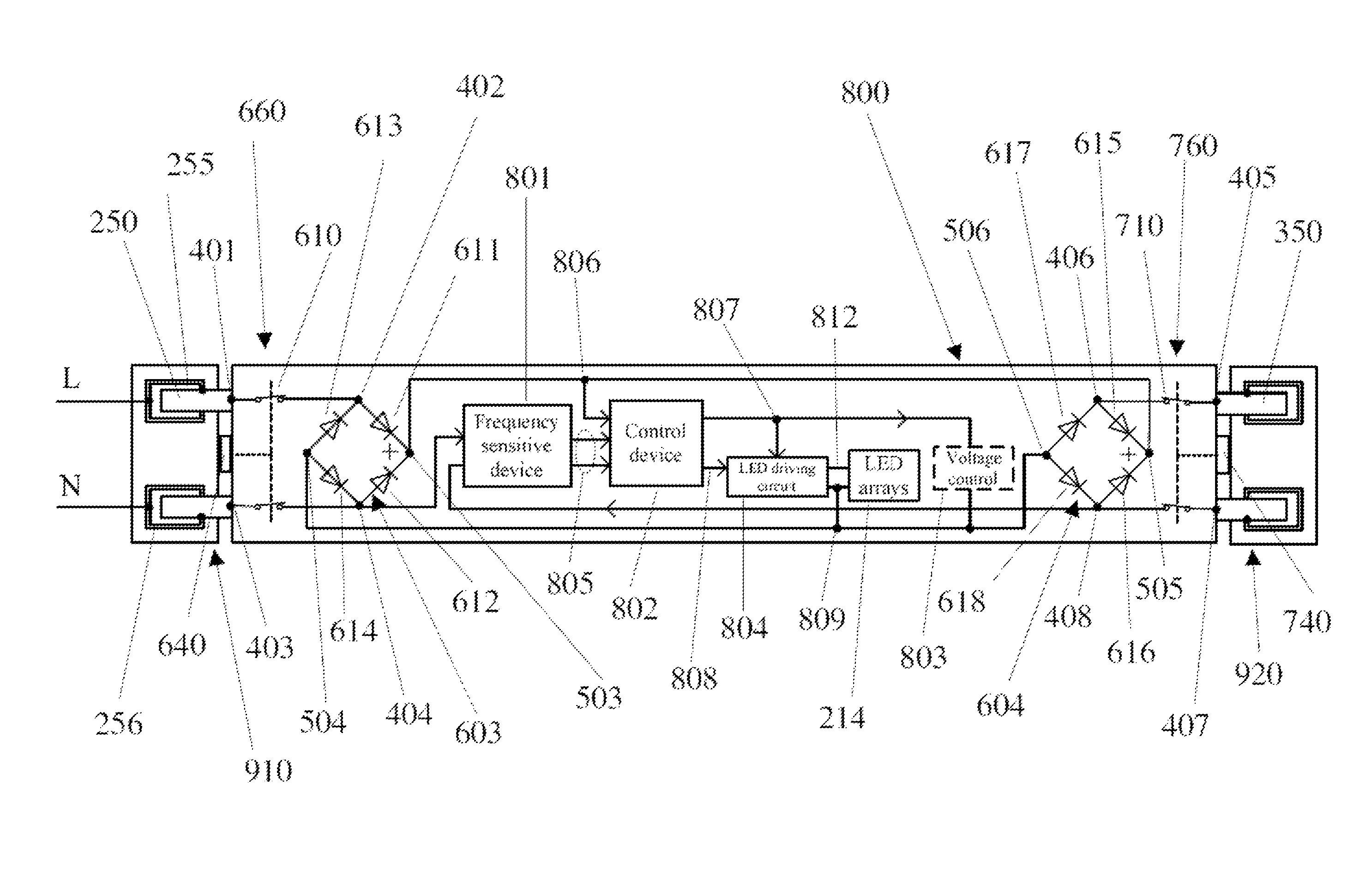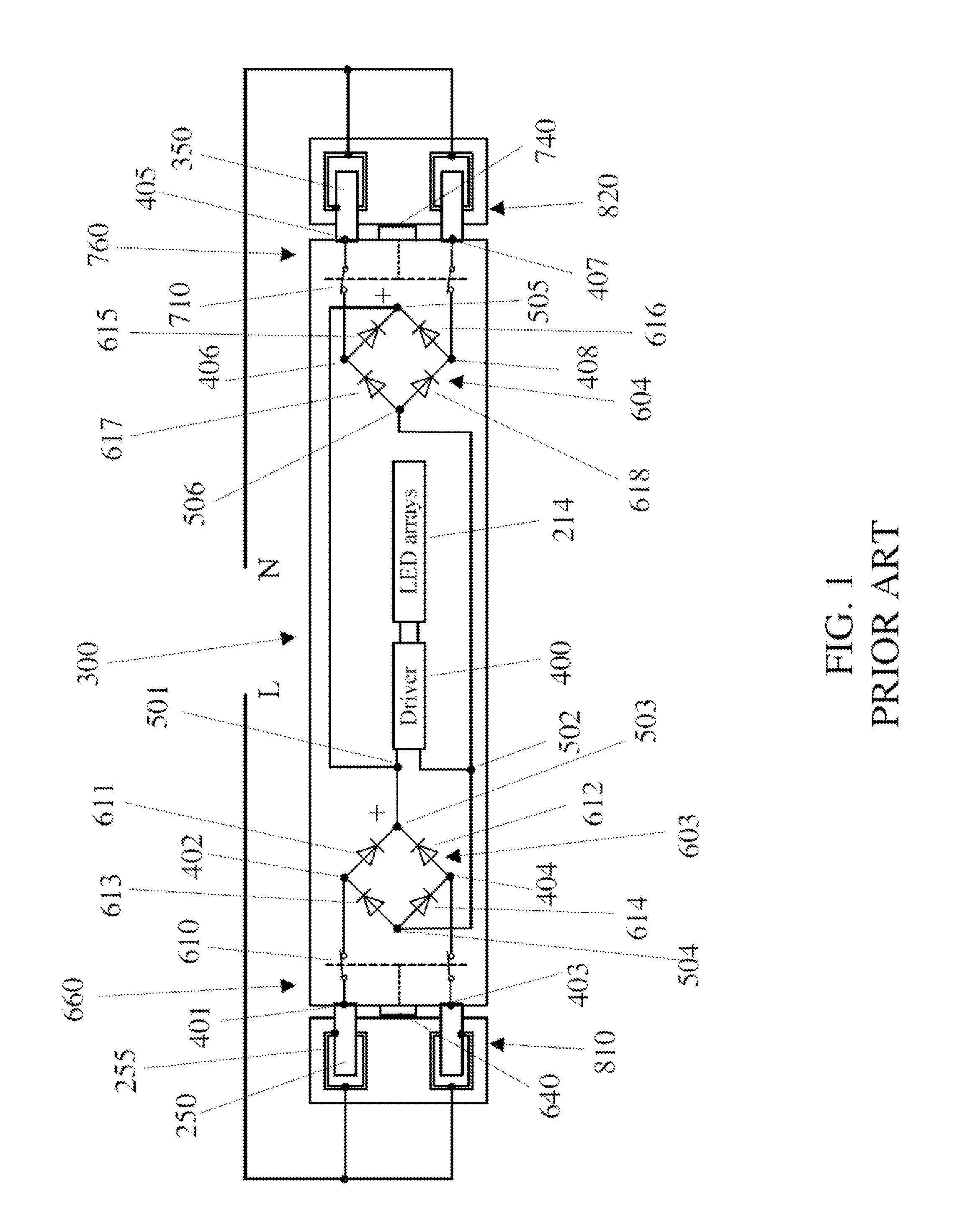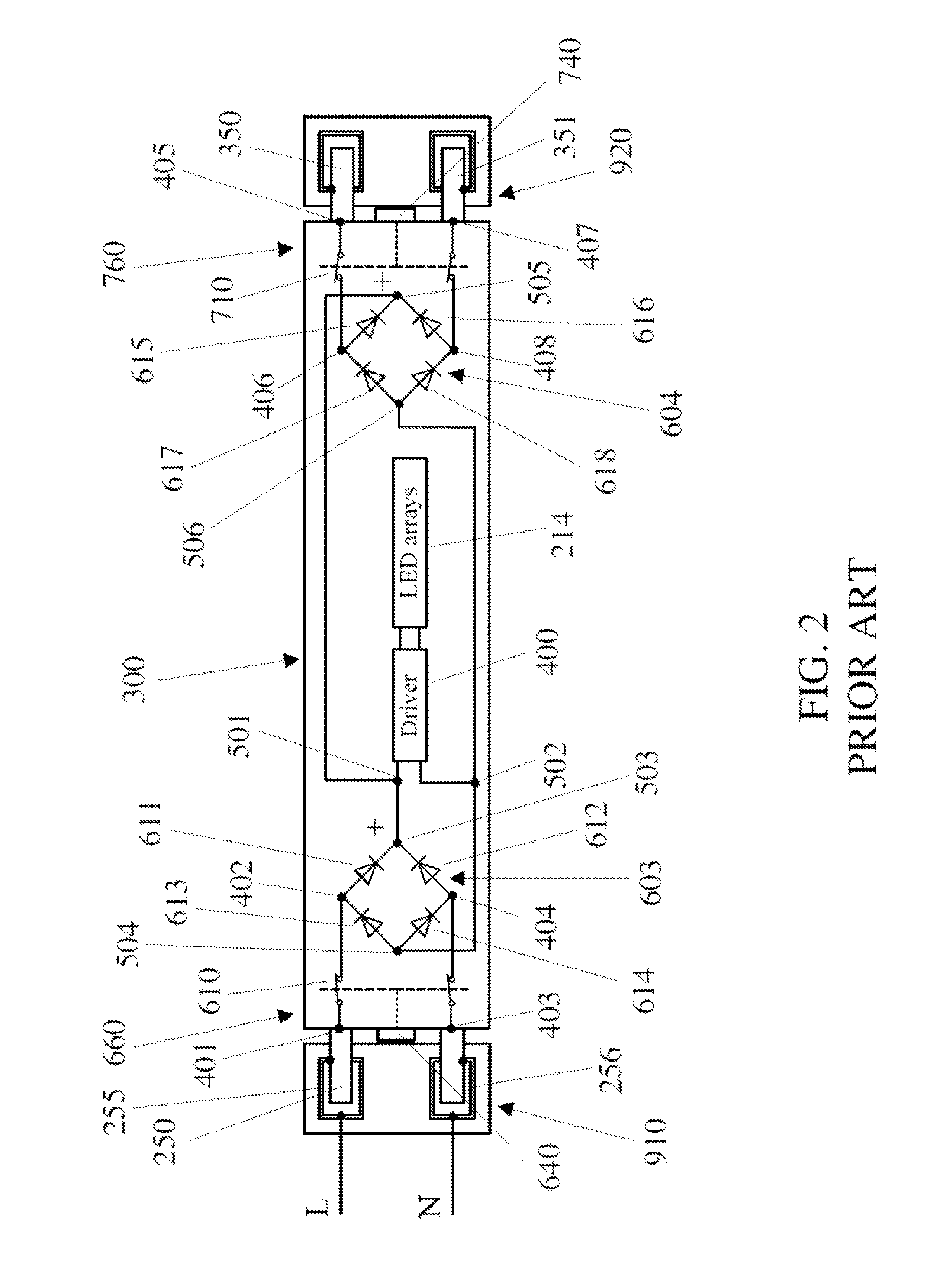Linear solid-state lighting with frequency sensing free of fire and shock hazards
a technology of frequency sensing and solid-state lighting, which is applied in the direction of lighting safety devices, semiconductor devices of light sources, lighting and heating apparatus, etc., can solve the problems of high total cost of ownership, inconvenient maintenance, and inability to identify ballasts and replace incompatible parts
- Summary
- Abstract
- Description
- Claims
- Application Information
AI Technical Summary
Benefits of technology
Problems solved by technology
Method used
Image
Examples
Embodiment Construction
[0027]FIGS. 3-4 are block diagrams of a universal LLT lamp configured in a double-ended and a single-ended fixture according to the present disclosure. The universal LLT lamp 800 comprises a housing having two ends; two lamp bases 660 and 760 having respective bi-pins 250 and 350 at each end of the housing; two actuation mechanisms 640 and 740 of shock protection switches 610 and 710 respectively in the two lamp bases 660 and 760; two bridge rectifiers 603 and 604; a frequency sensing and control mechanism comprising a frequency sensitive device 801 and a control device 802; a voltage control device 803; an LED driving circuit 804 having two inputs 807 and 808 and a current return port 809; and LED arrays 214 on an LED PCB.
[0028]Each bridge rectifier comprises four diodes, 611, 612, 613, and 614 for the first bridge rectifier 603 and 615, 616, 617, and 618 for the second bridge rectifier 604. In the first bridge rectifier 603, the four diodes are interconnected with four input / outpu...
PUM
 Login to View More
Login to View More Abstract
Description
Claims
Application Information
 Login to View More
Login to View More - R&D
- Intellectual Property
- Life Sciences
- Materials
- Tech Scout
- Unparalleled Data Quality
- Higher Quality Content
- 60% Fewer Hallucinations
Browse by: Latest US Patents, China's latest patents, Technical Efficacy Thesaurus, Application Domain, Technology Topic, Popular Technical Reports.
© 2025 PatSnap. All rights reserved.Legal|Privacy policy|Modern Slavery Act Transparency Statement|Sitemap|About US| Contact US: help@patsnap.com



